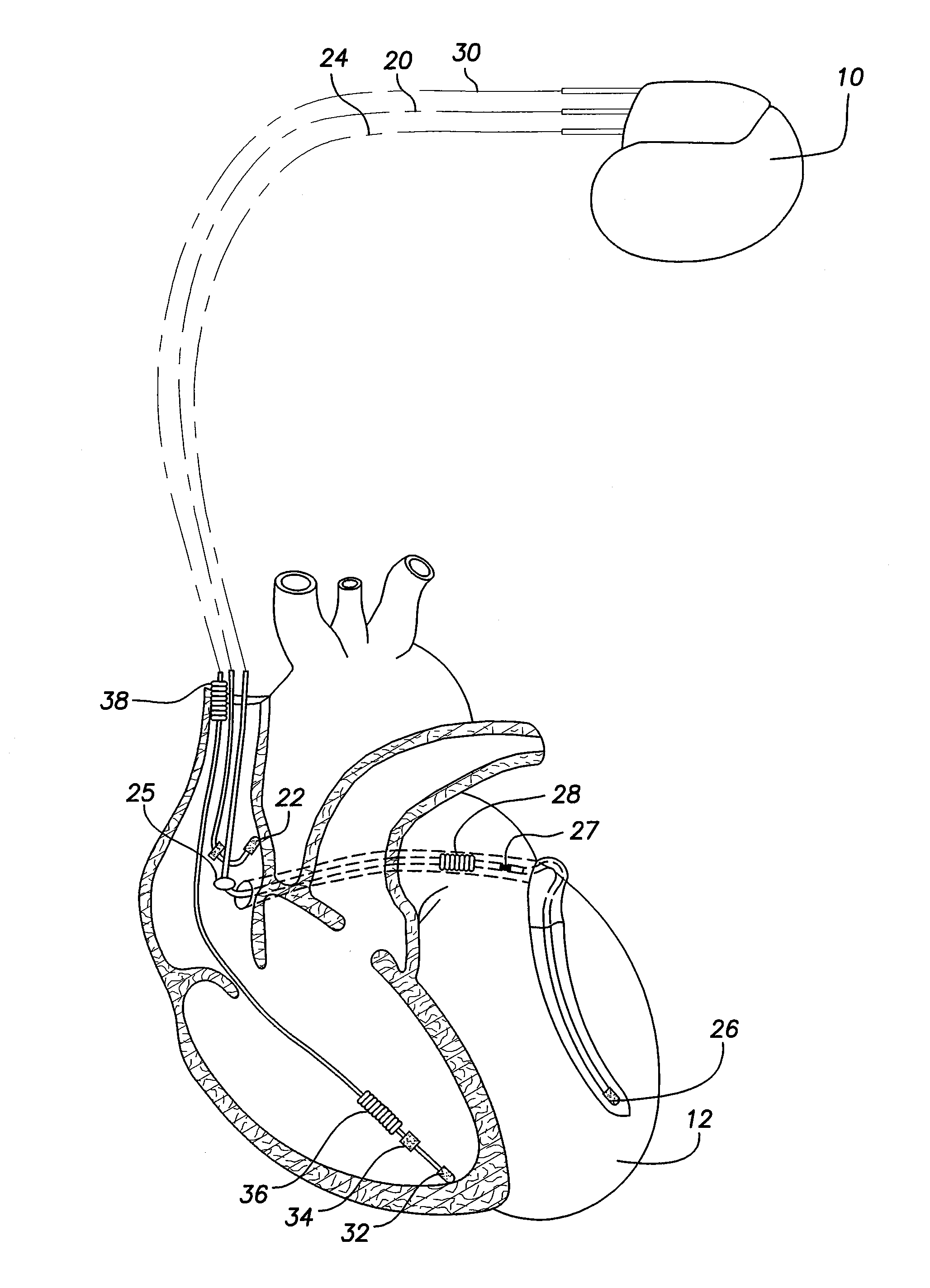Method to stabilize ventricular rate during episodes of atrial fibrillation
a technology of atrial fibrillation and ventricular rate, which is applied in the field of atrial fibrillation stabilization and atrial fibrillation episodes, can solve the problems of patient discomfort, patient dizziness or fatigue, and ventricular fibrillation (vf) is an immediate life-threatening tachyarrhythmia, so as to avoid heart capture
- Summary
- Abstract
- Description
- Claims
- Application Information
AI Technical Summary
Benefits of technology
Problems solved by technology
Method used
Image
Examples
first embodiment
[0058]In accordance with a first embodiment, the AV nodal refractoriness may be lengthened by delivering a series of pacing-like stimulation pulses during the AV node refractory period, thereby extending its interval. Preferably, the frequency of the AV nodal pacing is slightly higher than
1AVRP,
where AVRP is the AV nodal refractory period.
[0059]In another embodiment, continuous stimulation pulses (for neural stimulation) are delivered to stimulate the distal end of vagal nerves of the AV node. The bursts of stimulation pulses are preferably sub-threshold so that the heart is not captured by the pulses delivered near the AV node. The duty cycle of the bursts may be programmable to achieve the target ventricular rate.
[0060]To re-establish AV nodal conduction (turn the AV node back ON), the electrical stimulation of the node itself or the vagal innervations are temporarily stopped. The duration of this period is selected such that only one atrial activation passes through the AV node b...
second embodiment
[0065]FIG. 4 shows a timing diagram illustrating a second embodiment to extend the AV nodal refractory period during episodes of AF to stabilize the ventricular rate. During T1, a plurality of stimulation pulses are delivered to stimulate the distal ends of vagal nerves in close proximity to the AV node. The opening period T2 is selected to pass only the first conduction from the atrium. The ventricular rate and stability is controlled by T1+T2. As previously mentioned, T1+T2 may be modulated by physiologic sensor 108. Preferably, the pulses have an energy and / or frequency that is sub-threshold and thus not capable of capturing the atria. The stimulation thus need not be delivered synchronously to a sensed atrial event.
[0066]In FIG. 5, a flow chart is shown describing an overview of the operation and novel features implemented in one embodiment of the device 10. In this flow chart, and the other flow chart of FIG. 6 described herein, the various algorithmic steps are summarized in i...
PUM
 Login to View More
Login to View More Abstract
Description
Claims
Application Information
 Login to View More
Login to View More - Generate Ideas
- Intellectual Property
- Life Sciences
- Materials
- Tech Scout
- Unparalleled Data Quality
- Higher Quality Content
- 60% Fewer Hallucinations
Browse by: Latest US Patents, China's latest patents, Technical Efficacy Thesaurus, Application Domain, Technology Topic, Popular Technical Reports.
© 2025 PatSnap. All rights reserved.Legal|Privacy policy|Modern Slavery Act Transparency Statement|Sitemap|About US| Contact US: help@patsnap.com



